There are very few days that occur which we will remember for the rest of our lives. Today was one of those days.
We loaded the bus with Dr. P.E. Vijay Anand from the American Soybean Association. He served as our guide, taking us for a 3 hour trek north from New Delhi into the countryside. Immediately leaving our hotel we began to experience all that is India — from the colorful markets to the complete poverty of the Dehli slums and the confusing, congested traffic. While the poverty you see leaves a significant impression, it’s important to note that over half of India’s population is under 30 and growing in income which in turn drives demand for consumer goods. There is hope these conditions will improve.
On the road it is not uncommon to see a motorcycle with 3-6 people on it, often including children. Before leaving the city of Dehli boundaries we saw monkeys, cows, goats, chickens, ox and more on or along the roads. The contrasts are stunning. There’s a brand new office building or new home next to stacks of “fuel cakes” which are hand formed discs of manure and hay used as a burn source for cooking. But one constant is the friendly nature of the Indian people, whether on the roads or in the villages, they would always smile and wave. We stopped at a highway coffee shop that would rival any US coffee shop – just another of India’s sharp contrasts.
 We briefly visited a fast food restaurant owned by Mr. Sultan Singh. He started this restaurant as a value added outlet for the crops grown on his integrated aquaponics farm which we proceeded to visit. With the help of Dr. Anand, Singh has introduced improved production practices and value-added processing of his fish to increase his profitability.
We briefly visited a fast food restaurant owned by Mr. Sultan Singh. He started this restaurant as a value added outlet for the crops grown on his integrated aquaponics farm which we proceeded to visit. With the help of Dr. Anand, Singh has introduced improved production practices and value-added processing of his fish to increase his profitability.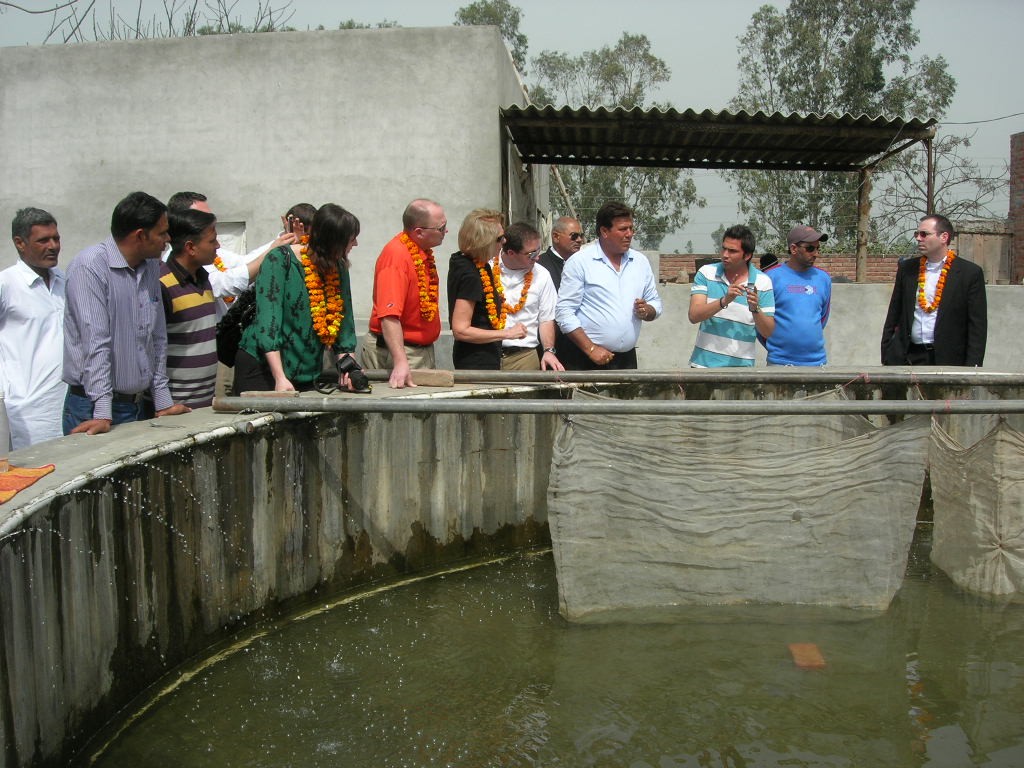
After touring his farm and the processing plant he took us into the village where he lives. We were treated like royalty from the villagers – including being lead by a village percussionist as we walked to a local school. 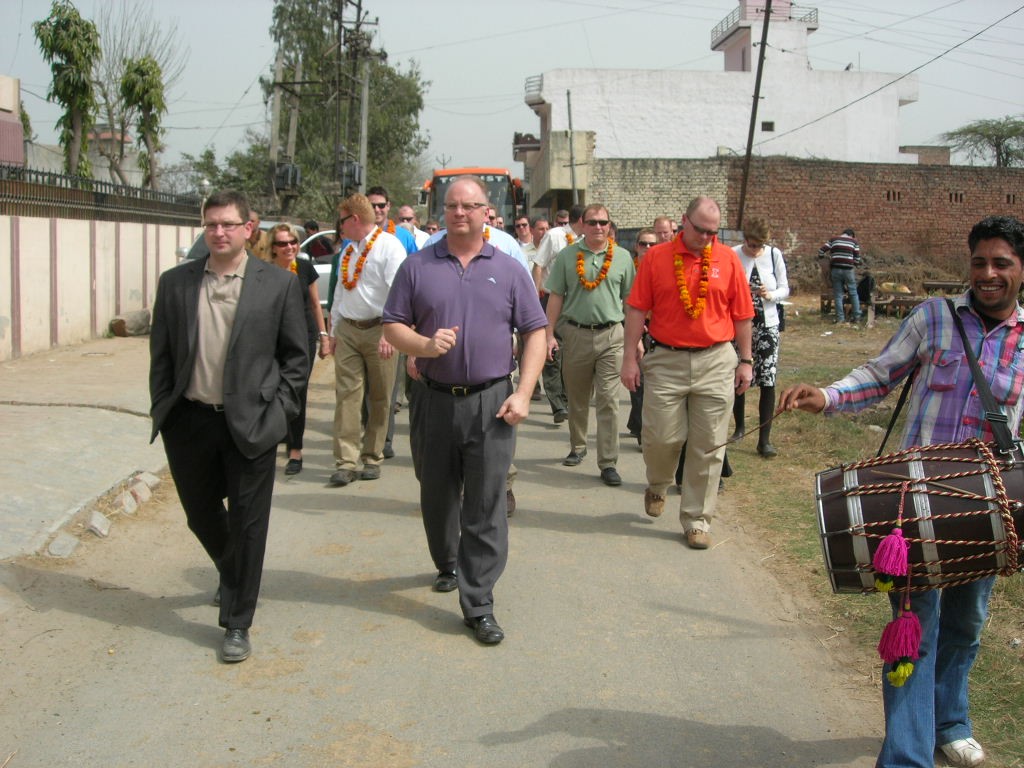 This is Sunday and school is not in session, but we were still welcomed by the school’s Director, teachers, students and parents with traditional dances and songs. In the true spirit of the cultural exchange, several students had prepared questions about life in the west that they asked of us. Once again we were reminded of how special they view visitors to their village and the fact that we were from America just added to their excitement and curiosity.
This is Sunday and school is not in session, but we were still welcomed by the school’s Director, teachers, students and parents with traditional dances and songs. In the true spirit of the cultural exchange, several students had prepared questions about life in the west that they asked of us. Once again we were reminded of how special they view visitors to their village and the fact that we were from America just added to their excitement and curiosity. 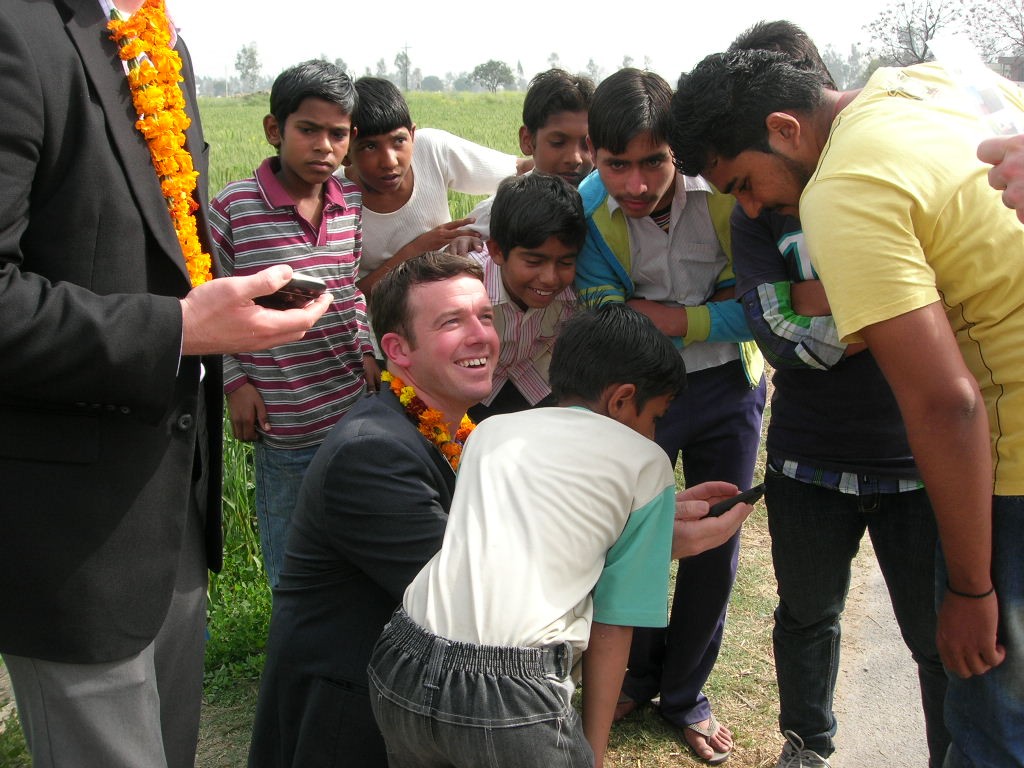 This became especially evident as we loaded the bus and realized one of our classmates was missing. We found he had been pulled into a classroom of teachers and students who’s curiosity had engaged him in questions as our bus was pulling away.
This became especially evident as we loaded the bus and realized one of our classmates was missing. We found he had been pulled into a classroom of teachers and students who’s curiosity had engaged him in questions as our bus was pulling away.
Our next stop was a restaurant and outdoor mall, which is India’s version of a rest stop, called a d’haba. At this area one could get accommodations, purchase authentic Indian products and foods, or even go for a ride on a camel. Sights of home were also present such as Baskin Robbins ice cream – demonstrating the western corporations infusion into the economy. Speaking of dairy, India consumes and produces the largest amount of dairy in the world. However, due to their religious belief of the 35-40 million cows, only 28 million are used for milking.
Our next stop was a Case IH trial farm where we saw the mechanization of India, including small tractors and various implements on display by researchers, local farmers and dealer representatives. One classmate even got to take the wheel – “Stewart Farms Asia” began the spring field work!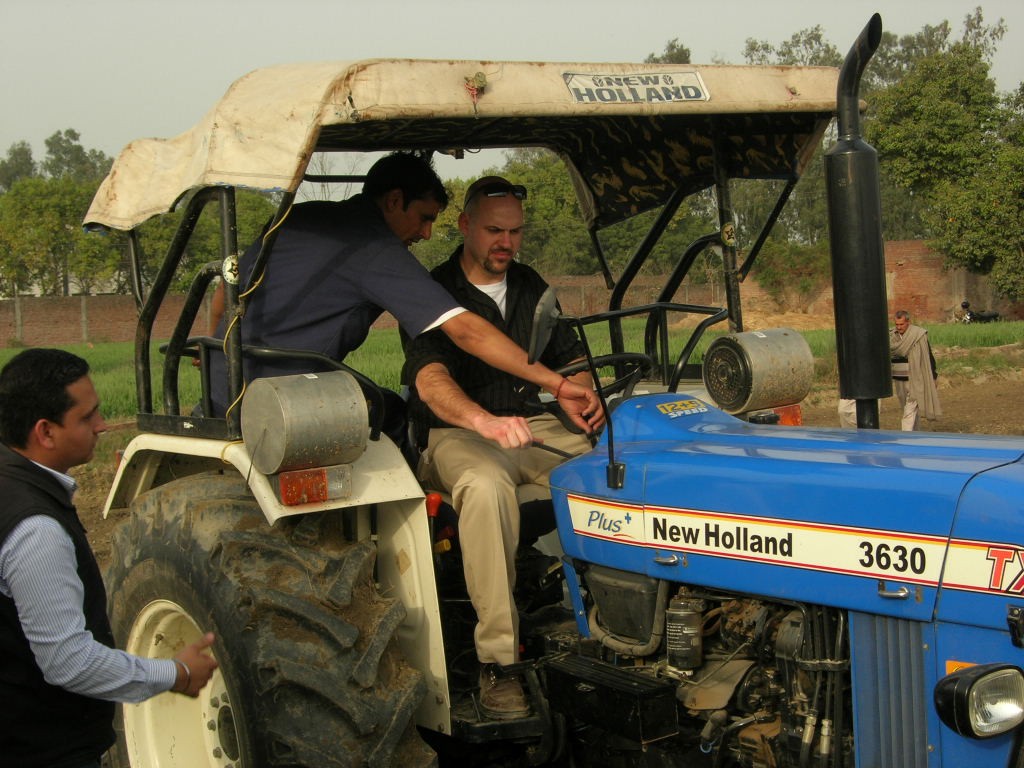 It should be noted that the farm grows wheat which is irrigated with an ever-decreasing water supply. Many, if not all, of the surface water sources where polluted beyond any of our widest imaginations.
It should be noted that the farm grows wheat which is irrigated with an ever-decreasing water supply. Many, if not all, of the surface water sources where polluted beyond any of our widest imaginations.
Our final stop of the day was at the home of Athul Khanna and his wife, who own i2i Consulting and is the Indian Representative of the Global Cold Chain Alliance. His consulting firm assists Western companies in opening markets in India for their products. Global Cold Chain Alliance is a non-profit organization engaged in the development of more adequate refrigeration transport and storage of India’s perishable items. In fact, 30% of India’s fresh fruits and vegetables spoil before being consumed. We were treated to a traditional Indian cuisine, but the real surprise was elephant rides in a nearby park for IALF classmates!! 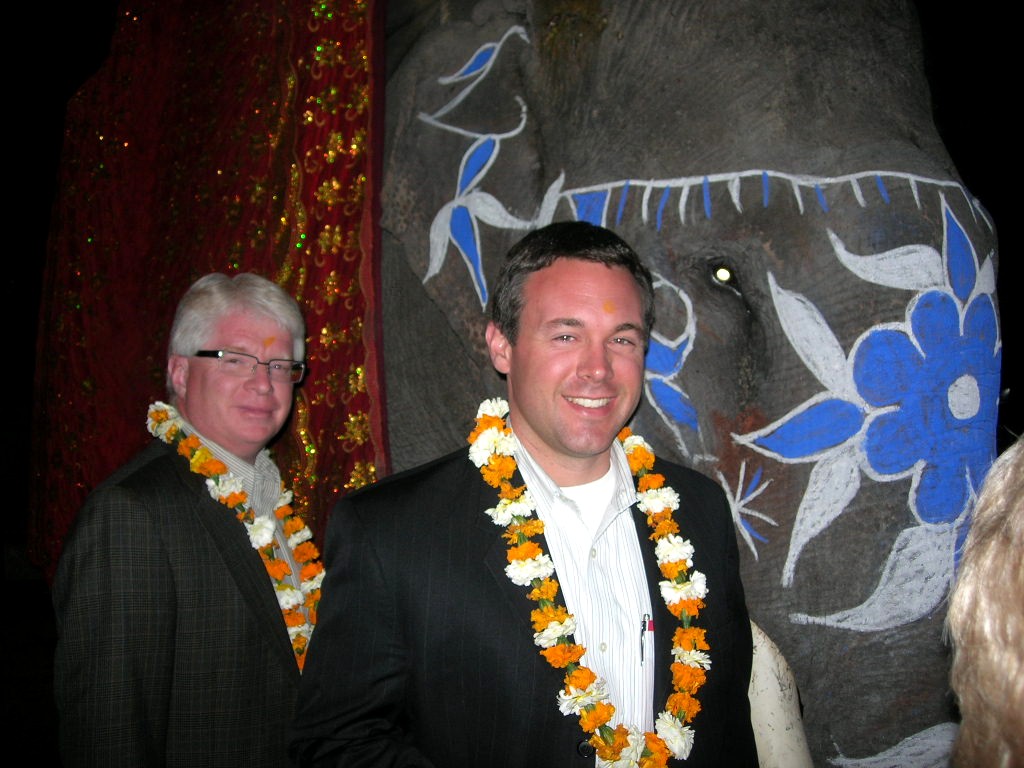


Leave a Reply
You must be logged in to post a comment.